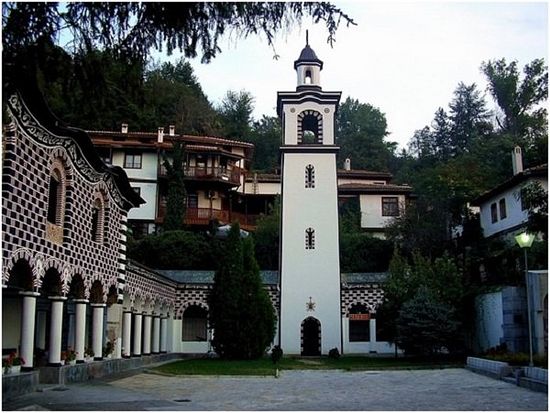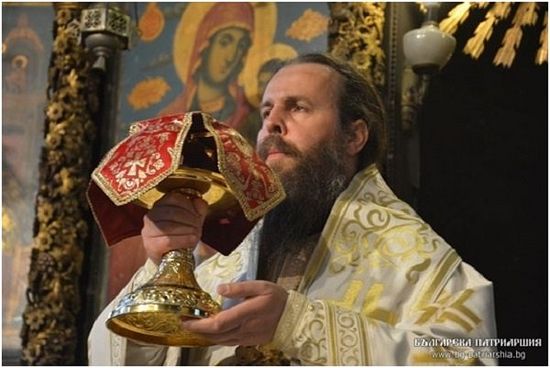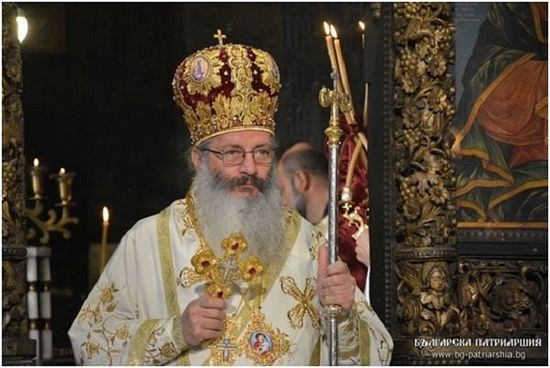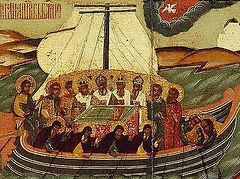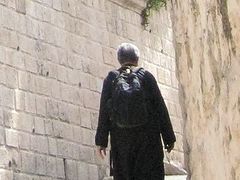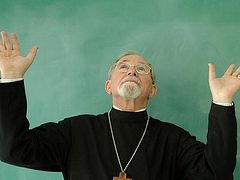Source: Pemptousia
October 2, 2016
Last Sunday, my wife and I attended the Divine Liturgy at the church of the Entry of the Mother of God in Blagoevgrad, Bulgaria, where we stumbled upon five metropolitans/ bishops, as well as priest and deacons representing the Churches of Antioch, Russia, Serbia, Romania, Georgia, Poland and Cyprus, as well as, of course, Bulgaria.
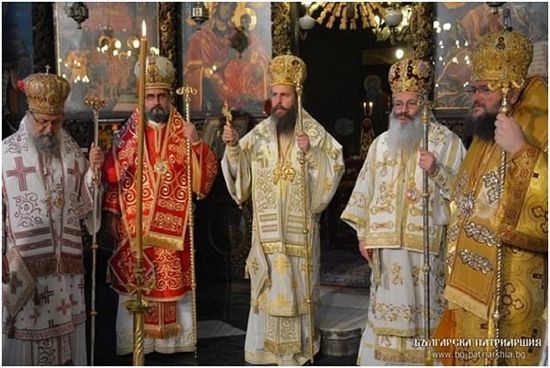 l. to r. Pakhomij of Varna (Serbia), Demetri of Safita (Antioch), Serafim of Nevrokop, Christoforos of Karpasia (Cyprus) and Grigorij of Branitsa (Bulgaria). Photographs courtesy of the Patriarchate of Bulgaria
l. to r. Pakhomij of Varna (Serbia), Demetri of Safita (Antioch), Serafim of Nevrokop, Christoforos of Karpasia (Cyprus) and Grigorij of Branitsa (Bulgaria). Photographs courtesy of the Patriarchate of Bulgaria They were there for a conference chaired by Metropolitan Serafim of Nevrokop, the local hierarch, who, though young (42) and newly-elected (2014) has already won the hearts of his flock with his kindly demeanour and the dignity with which he celebrates.
At the conclusion of the Divine Liturgy, an address was given by Bishop Christoforos of Karpasia on the meaning of the Church. Given that this was an extempore sermon, I don’t have the exact text, but there is another text of his, from earlier this year (15 May), on the same subject, which makes the same points and from which we quote extracts here:
What is the Church? What does the Church express? How is the unity of the Church expressed? What is the content of the unity and universality of the Church? What does the expression ‘the visible unity of the Church’ mean in the context of the Ecumenical Movement and what does this involve? With these fundamental ecclesiological questions in mind, I’d like to put forward some theological thoughts, on the basis of the address by Metropolitan Chrysostomos of Messinia. Referring to the definition of the Church, Saint John Chrysostom says that the Church expresses the unity and accord between its members, which is achieved, however, because ‘Christ is the unifying link’.
So the nature and the purpose of the Church is Christocentric in the following, dual sense.
a) the essence and concept of the Church defines its union with Christ and in Christ since ‘from Him it has its being and its wellbeing’.
b) the unity of the Church is achieved and is made manifest when ‘all of us together are with each other in Christ and not merely with each other’.
It follows, then, that ‘the priority of the aim and existence of the Church is unity and communion, as a fact and as a mode of existence, rather than unity itself and for its own sake’. This communion and unity is expressed through the Sacrament of the Divine Eucharist and is made manifest as the Body of Christ and therefore communion is actually a mode of existence now, not merely some sort of superficial similarity. And as Saint Nikolaos Kavasilas says: ‘the Church expresses itself in the sacraments, not as in symbols but as members in the heart… Here, communion is not in name alone, a superficial similarity, but is really the state of being one and the same’…
The Church, then, is not simply the aggregate of those who believe in Christ, in one way or another, but fundamentally and primarily is to be defined as the unity and communion in Christ of all its members. It is expressed as unity of the faith, life and truth.
Saint John Chrysostom goes on to make the point that there is no possibility of unity within the sacrament of the Divine Eucharist with those who are outside the bounds of Orthodoxy. Orthodoxy here should be understood to mean unity and communion expressed in the faith and the sacraments, not merely a confessional ideology.
On the basis of the above, we may conclude that ‘today the concepts of the unity and universality of the Church, instead of being defining terms as regards what the Church actually is, have come to be ends in themselves, without meaning anything substantial. The result is that, in the name of this end, the essential is often confused with the superficial and the enduring with the fleeting’ (Metropolitan Chrysostomos of Messinia). Consequently, any forcing of a correlation between things which are, in fact, very different, between the clear boundaries of ‘What is the Church?’ and ‘having ecclesiological features’ cannot express reality as it is, nor can it lead to unity and communion.
Because, according to Saint John Chrysostom, the first (What is the Church?) defines the fact of ecclesiastical unity, centred on the Divine Eucharist, through which the universality of the Church is expressed. As Saint Nikoloas Kavasilas puts it: ‘through this blood, the faithful are already living the life in Christ’…
The second, ‘having ecclesiastical features’, simply defines the aim and method of approaching ecclesiological matters. It is therefore incorrect, from an ecclesiological standpoint, to use the term ‘Church’ for other Christian organizations and confessions which do not share its defining content, Ecclesiologically, the term ‘Church’ reveals and determines the quality of the one faith and life (Orthodoxy) which is marked and confirmed through communion in the holy sacraments. So when it is used in ecclesiological texts, it must be clear and non-negotiable, because otherwise it will lead us down theological and ecclesiological blind-alleys.
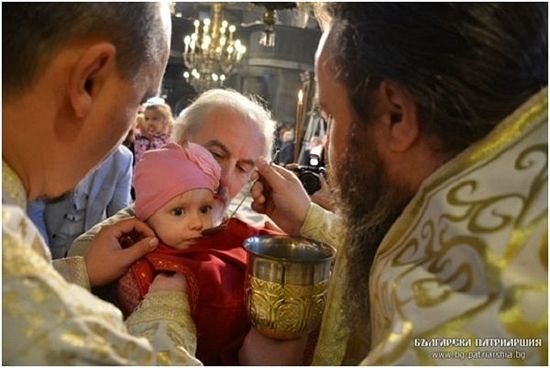 This young lady came all the way from Russia to attend the conference and even brought her parents. During the communion of the clergy she stood in front of the Royal Doors, all by herself, with her arms crossed (!) waiting patiently for her turn. Photographs courtesy of the Patriarchate of Bulgaria.
This young lady came all the way from Russia to attend the conference and even brought her parents. During the communion of the clergy she stood in front of the Royal Doors, all by herself, with her arms crossed (!) waiting patiently for her turn. Photographs courtesy of the Patriarchate of Bulgaria. 
